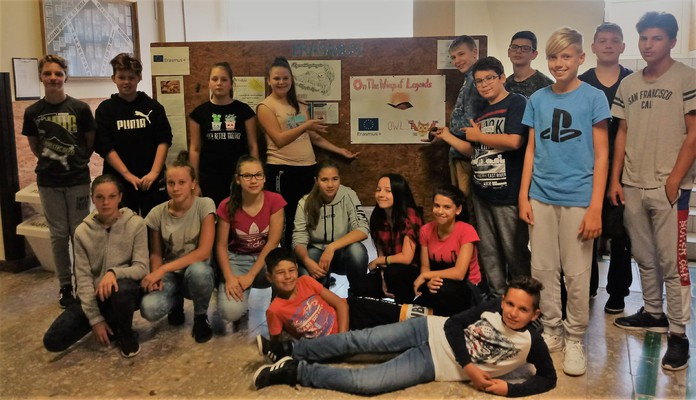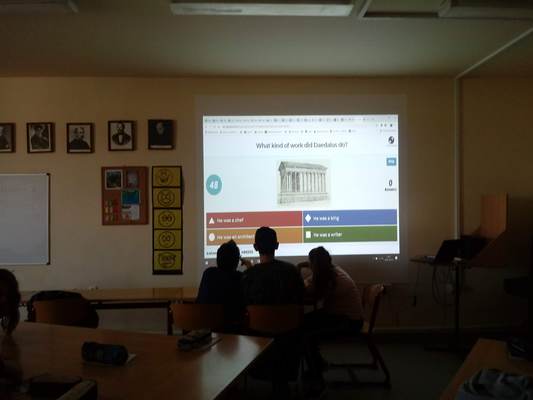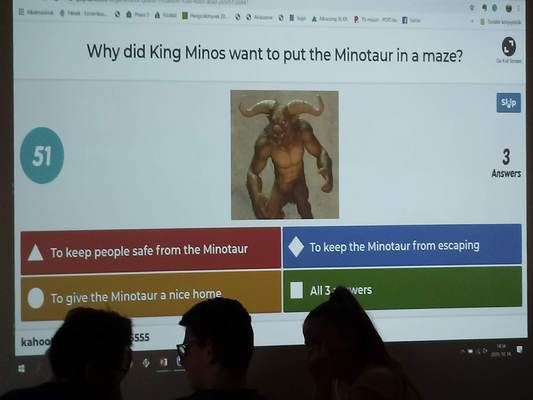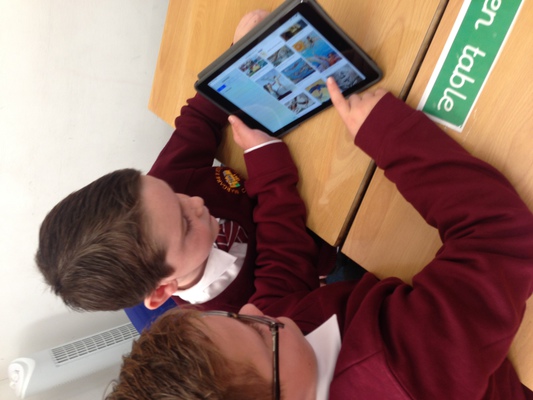Icarus et Dedaleus
We started the project work with the beautiful Greek legend of Icarus. First we had read it in English, then we looked for a Hungarian translations in the library and read it again. We talked about the feelings to be in a maze, or in prison, and the desire of the human beings to fly.
Next time we played a True/False game and then children solved a Kahoot Quiz. It was a nice experience!
We started the project work with the beautiful Greek legend of Icarus. First we had read it in English, then we looked for a Hungarian translations in the library and read it again. We talked about the feelings to be in a maze, or in prison, and the desire of the human beings to fly.
Next time we played a True/False game and then children solved a Kahoot Quiz. It was a nice experience!
-------------------------
We
used the ipads to research about the legend of Daedalus and Icarus.






For this first, they studied the narrative scheme, made a presentation and established a mind map recalling the heroes, the places of action ... ..
For the second, they read aloud and thought about an individual mind map.
For the last, they read individually, answered a few comprehension questions and made arrow words on the different works of Hercules.
They were also able to discover the gods of Greek mythology through the visual arts: pixel art and the monsters of mythology by using their imagination based on a given description. (the cerberus, the minotaur, the hydra ...)
In the class, the pupils played the game of the “7 families” of mythology with the families of the gods, monsters, heroes, goddesses….
Finally, through fun reading, we discovered lots of exciting stories!
The Maze of Daedalus
Daedalus built a labyrinth to lock up the Minotaur (half-man, half-bull). Theseus killed him and managed to get out of the labyrinth thanks to the breadcrumb (idea given by Daedalus). Minos, the king of Crete, disgruntled condemned Dédale and his son Icarus to live in their turn in the labyrinth. They managed to escape by making wings, but Icarus, having gotten too close to the sun, fell into the sea.
It is this legend that the students have told in turn before they start to make their labyrinth. Two by two, they stuck straws on a paper labyrinth fixed on a box lid. They then placed the Minotaur there. The object of the game: to move a ball or a magnet representing Theseus (using another magnet held under the cover) along the route to the Minotaur and repeat the journey out of the labyrinth.
The labyrinths made were divided into the different classes of the school.